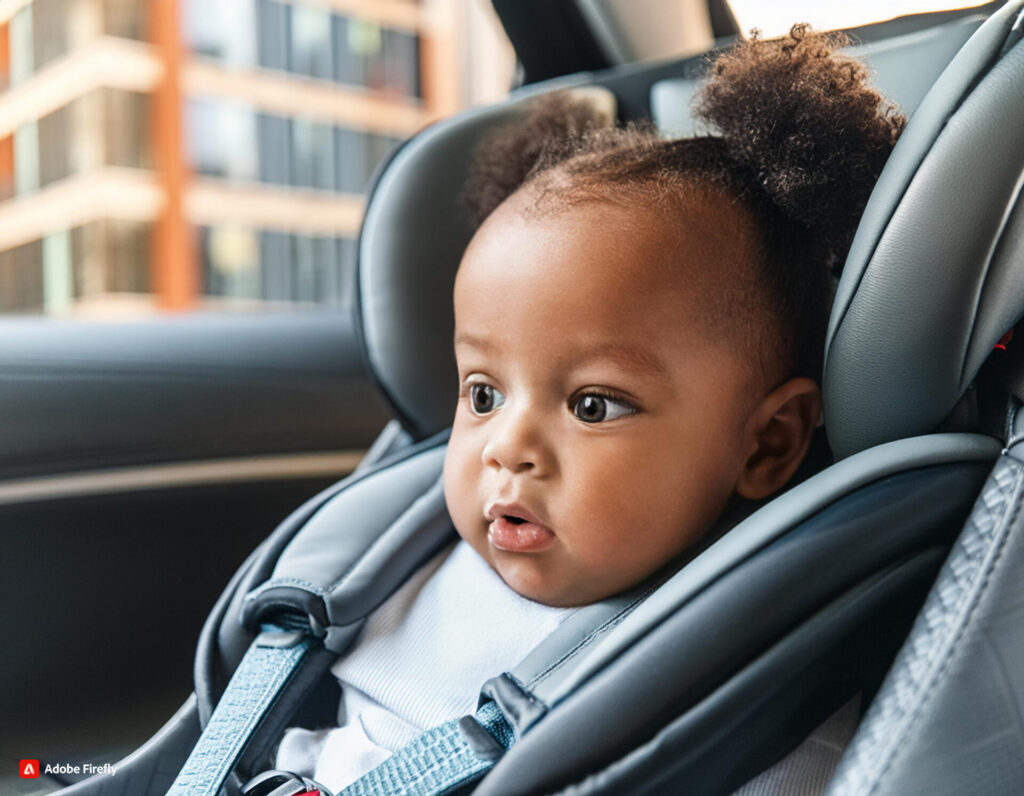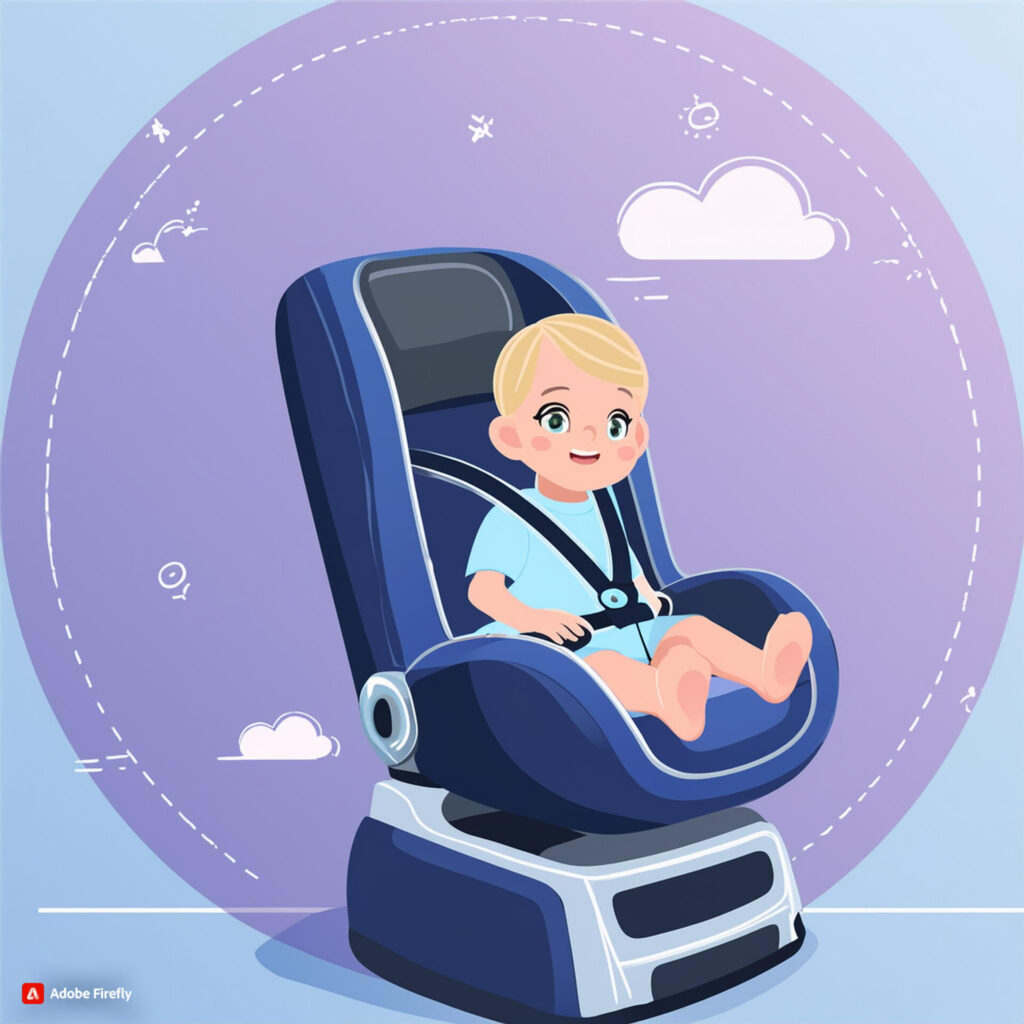Are Rotating Car Seats Safe For Your Baby?

Yes, rotating car seats are safe for your baby when used correctly. They meet the same rigorous safety standards as traditional car seats. But their greatest benefit is for parents! The swivel mechanism allows you to easily turn the seat towards you, making buckling up your little one a breeze. This is a back-saver and a huge convenience, especially for parents with wiggly toddlers. However, there are other factors to consider, like cost and weight limits. So, let’s dive into the details to see if a rotating car seat is the right choice for you and your baby.
What are rotating car seats?
Rotating car seats are just what the name suggests – car seats that swivel on a base. This rotation, typically 180 or even 360 degrees, offers some great advantages for parents but also comes with a few things to consider.
Here’s a breakdown of rotating car seats:
How They Work:
- The base of the seat is fixed and securely installed in your car using your car’s latch system.
- The car seat itself sits on the base and swivels on a track.
- This allows you to easily rotate the seat towards you, making it much easier to buckle up your child without having to awkwardly reach into the back seat.
PROS
- Effortless Buckling & Unbuckling: The swivel mechanism allows you to rotate the car seat towards you, making it a breeze to buckle up your child without awkward contortions in the back seat. This is a game-changer for parents with back problems or limited mobility.
- Smoother Transitions: When your child falls asleep rear-facing, you can easily rotate the seat forward without disturbing them when transferring them to a stroller or crib.
- Enhanced Interaction: With the seat turned towards you, it’s easier to soothe your child, play peek-a-boo, or keep them entertained during the ride.
- Improved Visibility (for older children): Some swivel car seats can be turned to a more outward-facing position, allowing your older child to see out the window better, potentially reducing car sickness.
Cons
Cost: Rotating car seats tend to be pricier than traditional models due to the added swivel mechanism. Weight & Height Limits: Some rotating car seats may have lower weight and height limits for rear-facing use compared to standard seats. Remember, rear-facing is always the safest position for young children. Bulkier Design: The swivel mechanism can add some bulk to the car seat, potentially making it a tight fit in some vehicles.
Are rotating car seats safe for my child?

Yes, rotating car seats can be safe for your child, as long as you use them correctly. Here’s a breakdown of their safety:
Safety Features:
- They meet the same safety standards as traditional car seats set by organizations like the National Highway Traffic Safety Administration (NHTSA) in the US. These standards ensure that they provide adequate protection in a crash.
- They typically have features like a five-point harness and energy-absorbing materials to keep your child secure.
Key Points for Safe Use:
- Rear-Facing is Best: Just like with any car seat, keeping your child rear-facing for as long as possible (ideally until age 2 or exceeding the seat’s weight/height limits for rear-facing) is the safest position.
- Proper Installation: This is crucial for any car seat. Follow the manufacturer’s instructions carefully to ensure a snug fit in your car. There are also resources available to help with installation, such as certified car seat technicians.
- Rotating Function: The swivel mechanism itself shouldn’t compromise safety. But remember, the rotating function is for getting your child in and out – never use it while the car is moving.
What should I look for when buying a rotating car seat?

Here are some key things to look for when considering a rotating car seat:
- Safety Features: As with any car seat, safety should be your top priority. Make sure the rotating car seat you choose meets the latest safety standards set by organizations like the National Highway Traffic Safety Administration (NHTSA) in the US. Look for features like a five-point harness, energy-absorbing materials, and a secure base with a good latch system for attachment to your car.
- Rear-Facing Capability: Rear-facing is the safest way for young children to travel in a car. Look for a seat that allows rear-facing for as long as possible, ideally until your child reaches the age of 2 or surpasses the car seat’s weight/height limits for rear-facing use.
- Ease of Use of the Rotating Mechanism: The rotating mechanism should be smooth and easy to use, ideally with one-handed operation. This will make it much easier to buckle up your child, especially as they get older.
- Comfort and Support: Your child should be comfortable and well-supported in the car seat. Look for a seat with good padding, adjustable headrests, and multiple recline positions.
- Weight and Height Limits: Make sure the car seat has weight and height limits that are appropriate for your child’s current and future needs. Remember, they should stay rear-facing for as long as possible.
- Convertibility: A convertible car seat can be used rear-facing, forward-facing, or as a booster seat. This can be a more economical option in the long run, as you won’t need to buy multiple car seats as your child grows.
- Size and Fit: The car seat should fit comfortably in your car without being too bulky. Measure your back seat to ensure there’s enough space for the car seat base.
- Ease of Cleaning: Accidents happen, so choose a car seat with a removable and washable cover for easy cleaning.
- Budget: Rotating car seats tend to be more expensive than traditional models. Set a budget for yourself and look for a seat that offers the features you need within your price range.
Conclusion
In conclusion, rotating car seats can be perfectly safe for your baby as long as you use them correctly and prioritize rear-facing for as long as possible. While they offer undeniable convenience for buckling up your little one and interacting with them during rides, consider the trade-offs in cost, weight limits, and bulkier size. Ultimately, the best car seat is the one that fits your needs, budget, and car. Do your research and prioritize safety above all else to ensure the best ride for your precious cargo.
